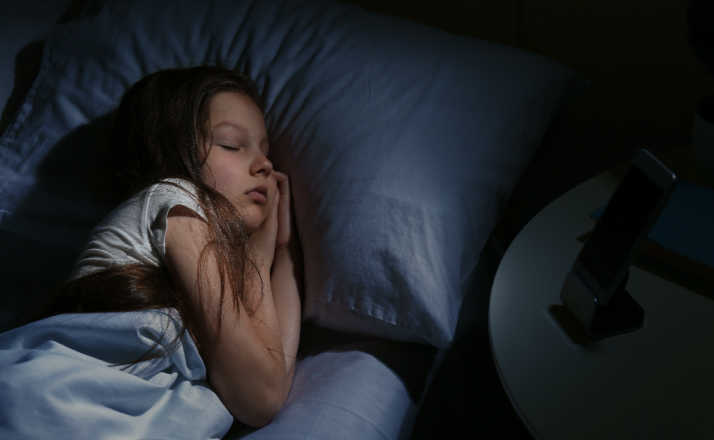Do you dread bedtime at your house? Does your kiddo go running wild when it’s time to settle down for the night? Do you want to find the best natural sleep tips to get your child to sleep?
Many parents have trouble getting their children to sleep, and it can be even more difficult for parents whose children have ADD.
Kids with ADD have a hard time falling asleep and staying asleep, and some children even have problems waking in the morning. Help your children sleep more soundly — no matter their age or their ADD status — with these natural sleep tips.

Natural Sleep Tips for Newborns and Babies
Swaddling helps newborns feel cozy and warm, just like in the womb, and swaddling babies can help them sleep at night, too. Swaddling helps control the Moro reflex, a natural reflex in the legs and arms that startles newborns awake.
Experts do not recommend using loose blankets in your baby’s crib, so swaddling is the perfect alternative to keeping your baby warm and cozy while she sleeps.
Always place your swaddled baby on her back for sleep, and stop swaddling when baby shows signs of rolling over (usually, around three to four months old).
For children who are ready to transition, invest in a few sleeping sacks, also known as wearable blankets.
Many baby stores offer a wide range of wearable blankets in a variety of fabrics and cute, fun prints. Each sleep sack has a handy two-way zipper which makes diaper changes easy. In addition to wearable blankets, you can also find dozens of swaddles for newborns, which are are also useful.
Natural Sleep Tips for Toddlers
Creating a bedtime schedule is key to helping your child get the restful sleep he needs. Most experts recommend a bedtime routine that lasts between 20-30 minutes, but children with ADD can benefit from a bedtime routine that lasts one hour.
Consider using an egg timer to help your entire family stay on track when it comes to the bedtime schedule.
Count down the hour with the first 30 minutes set for hygiene, like bathing, putting on pajamas and brushing teeth.
For the next 15 minutes, read a book with your child or do another relaxing activity, such as listening to soothing music. The final 15 minutes on the timer should be used for getting into bed and staying in bed. This can be the hardest part; use this time to talk to your child about their day or snuggling.
When the timer dings, it’s time for bed.
Natural Sleep Tips for School-Aged Children
Technology has been linked to numerous sleep problems, and it’s not only limited to adults — children are just as likely to be affected.
According to the National Sleep Foundation, light exposure from electronics stimulates the mind and keeps both children and adults awake, which not only impacts sleep quality and sleep time but daytime alertness, as well.
When it’s time to get ready for bed, shut off all electronics. That means no television, tablet, video games or cell phone. Lead by example and turn your devices off first. You might just get better sleep, too.
Here are some more helpful resources on sleep you might like.
Wholesome Foods for Energy and Sleep
4 Strategies to End Sleep Struggles











